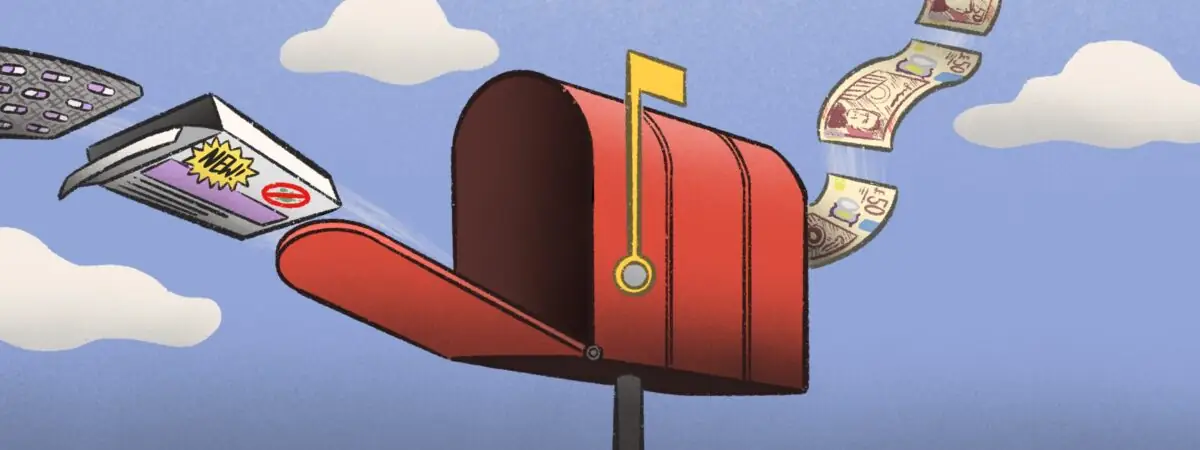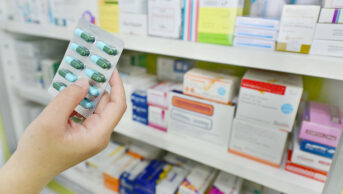Antimicrobial resistance (AMR) is a rapidly growing global challenge. In 2019, bacterial AMR infections were estimated to have directly caused 1.27 million global deaths and, by 2050, a study published in The Lancet in September 2024 suggested that it could cause 39 million more.
Listed by the World Health Organization (WHO) as one of the top ten global health threats in November 2023, AMR is fuelled by high levels of antibiotic prescribing. It occurs when bacteria and viruses evolve to the point that they no longer respond to existing medicines, increasing the risk of diseases spreading, leading to severe illness and death.
The situation is worsened by a lack of innovation in antibiotic development, with no new classes of antibiotics discovered since the 1980s. Yet antibacterial dispensing has grown over the past five years, according to NHS Business Services Authority’s Prescription Cost Analysis, from 34.9 million items in 2018/2019 to 36.8 million items in 2023/2024 in England alone.
In an attempt to diversify our use of antibiotics and reduce the risk of resistance, the NHS is launching a ‘first-of-its-kind’ scheme — the NHS antimicrobial resistance subscription model.
What is the NHS antimicrobial products subscription model?
This is a new way of financially incentivising manufacturers to develop novel antibiotics without encouraging clinicians to prescribe more antibiotics as a way of increasing the NHS payment to pharmaceutical companies.
It was first floated in the government’s five-year AMR action plan — ‘Tackling antimicrobial resistance 2019–2024’ — published in January 2019. “We will test a new model that will de-link the payments made to companies from the volumes of antibiotics sold, basing the payment on a NICE [National Institute for Health and Care Excellence]-led assessment of the value of the medicines and supporting good stewardship,” the plan said.
The subscription model was piloted in July 2022 and deemed a success, leading to plans for the model to be scaled up in the government’s subsequent five-year AMR action plan — ‘Confronting antimicrobial resistance 2024 to 2029’ — which was published in May 2024. The NHS later tendered a contract on 12 August 2024 for the wider provision of the model.
The contract tender explains that, “by breaking the link between the payments companies receive and the number of their antibiotics prescribed, the NHS is removing any incentive to overuse antibiotics”, while still incentivising their development.
“Antimicrobial resistance is one of the world’s biggest health threats because it threatens to set modern medicine back to the pre-antibiotic era, meaning routine operations such as [caesarean sections] and hip operations, as well as cancer treatments, become enormously risky,” says David Glover, assistant director of medicines analysis at NHS England.
“The world-leading subscription model … is a major step forward in making sure it is financially viable for pharmaceutical companies to develop next-generation antimicrobial drugs to keep the spectre of drug-resistant superbugs at bay.”
The subscription-based approach has put the UK at the forefront of a global movement to fix the antibiotic market failure
Paul Catchpole, director of value and access policy at the Association of the British Pharmaceutical Industry
Why are there so few novel antibiotics in development?
In the contract tender, the NHS says that “investment in novel antimicrobials is widely seen as commercially unattractive”.
“High research and development costs and low returns (due to restrictions in usage to reduce resistance patterns) have led to market failure,” it says, explaining that companies do not see the return on investment seen with other innovative products where uptake is encouraged rather than restricted because of AMR.
“The ideal scenario would be for companies to develop and manufacture new antimicrobials which are not released into circulation until needed. However, this is not a viable commercial model for companies, therefore market development is needed.”
As a result, the NHS expects that the subscription model will solve this problem through paying companies a fixed annual fee for selected antimicrobials.
Which bacteria are the NHS looking to treat using the model?
NHS England says the model will prioritise products that treat infections caused by ‘critical’ pathogens included on the 2024 World Health Organization’s Priority List, which includes pathogens resistant to carbapenem and cephalosporin.
The NHS says the subscription model is aimed to “incentivise manufacturers to develop a new arsenal of drugs to fight conditions like sepsis and pneumonia, which are at risk of becoming resistant to treatment, and keep protecting patients from infections when undergoing routine operations or cancer treatment”.
How will hospital trusts and community pharmacies access these new medicines?
According to guidance published alongside the tender, hospitals and pharmacies will be able to purchase the antimicrobial using normal distribution routes at a nationally agreed invoice price. This price will be based on the pricing of comparator products and alternative products, with the aim of encouraging appropriate use of the antimicrobial.
“The invoice price should not be so high as to discourage appropriate use but also not so low as to encourage inappropriate use,” the guidance says.
How will incentives be determined?
The value of the contract awarded to manufacturers will be determined by an expert panel at NICE, which will use a scoring system. Based on this score, treatments will be allocated to one of four bands (see Table).
Manufacturers of ‘breakthrough’ antimicrobials will be allocated to the highest band and offered £20m in funding per year in England, followed by £15m for manufacturers of ‘critical’ new antimicrobials.
The third band will cover ‘priority’ new antimicrobials, which will be funded with £10m, while £5m will be available for ‘important’ new antimicrobials in England.
Significantly lower incentives will be offered to manufacturers producing antimicrobials for Scotland, Wales and Northern Ireland, individually.
According to an NHS press release: “[The] commercial approach is set to benefit both the NHS and industry by securing supply of new antimicrobial drugs for patients, while enabling pharmaceutical companies to reliably forecast their return on investment.”
Initial contract terms will be 3 years, with the option to extend for a maximum of a further 13 years.
Over the next 16 years, the NHS forecasts that the model could result in antibiotic investment of up to £1.6bn in the first cohort of products for patients.
How are the proposed antimicrobials scored?
The evaluation criteria have been developed by NHS England and NICE, with further validation by clinical experts from the government’s Advisory Committee on Antimicrobial Prescribing, Resistance and Healthcare Associated Infection.
There are 17 criteria grouped into three categories: relative effectiveness and unmet clinical need; pharmacological benefit; and health system benefit.
Each criterion has a maximum score of 100 points that will be weighted to give an overall score, which “reflects its relative importance to the overall value of an antimicrobial”.
For example, an antimicrobial’s score under the criteria ‘activity against WHO bacterial priority pathogens’ is given the largest weighting, accounting for 12.2% of its overall score. Meanwhile, the score for ‘product stability and storage’ will have the lowest impact on overall score, accounting for just 2.7%.
What have manufacturers said about the scheme?
During the pilot, which ran from July 2022 until July 2023, two treatments were selected — cefiderocol (Fetcroja; Shionogi) and ceftazidime with avibactam (Zavicefta; Pfizer).
From July 2023, NHS England ran a 12-week public consultation for feedback on the pilot, which was received from clinicians, patient groups, academic institutions and the pharmaceutical industry. Respondents were generally supportive of the model, but they raised issues with whether the funding available would be enough to encourage more research and development into antimicrobial products.
They also flagged the need for the model to work alongside schemes in other countries to “achieve mutually desirable ends”.
These issues were also raised in a report from the Office of Health Economics, published in November 2023, which warned that monetary incentives in bands 3 and 4 “will not be sufficient to generate substantial return or stimulate further [research and development]”.
“There is a low level of predictability across eligibility criteria, contract length and scoring, which will deter investment,” the report added, and called on the UK to work with similar schemes in the United States and EU to provide sufficient incentives.
“The subscription-based approach has put the UK at the forefront of a global movement to fix the antibiotic market failure,” says Paul Catchpole, director of value and access policy at the Association of the British Pharmaceutical Industry.
“By establishing a permanent subscription framework for antimicrobial products, the UK is setting an example for the world to follow. We must provide investors with a transparent and supportive framework if we are to combat antibiotic resistance.”
Has this model been successful elsewhere?
In 2016, the Australian government struck a five-year deal with pharmaceutical companies for unlimited access to direct-acting antiviral treatments for hepatitis C at a cost of AUD$1.2bn. Writing in The Lancet in January 2022, researchers later revealed that the deal led to substantial treatment uptake and major health and economic benefits, estimating that Australia was now on track to avert 15,700 new infections and 8,500 hepatitis C-related deaths between 2016 and 2030.
Similar models are also being adopted in other countries. In the United States, the ‘PASTEUR Act’ — currently under consideration by the US Senate — would allow the government to set up a similar subscription model for antimicrobials to the NHS. The Council of the EU also recommended the development of EU-wide “pull incentives” in June 2023, encouraging pharmaceutical companies to produce new antimicrobials.
Publicly available information of either robust trackers or clearly delineated progress being assessed against the stated aims of the scheme remains sparse
Rebecca Glover, interdisciplinary assistant professor at the London School of Hygiene and Tropical Medicine in AMR
However, AMR experts have warned that there are not enough data to show that the NHS model — as it was piloted — was successful. Writing in The Lancet in November 2023, Rebecca Glover, interdisciplinary assistant professor at the London School of Hygiene and Tropical Medicine in AMR, said: “Publicly available information of either robust trackers or clearly delineated progress being assessed against the stated aims of the scheme remains sparse.”
“The effect of these policies should not be oversold. One year into the UK’s subscription model pilot, we have seen no robust or transparent evaluation of the scheme’s effect, published evidence, or a priori performance indicators or policy aims. Clear definitions of the rules and parameters of the pilot are needed before it can be considered successful.”
What happens next?
NHS England has said that it would begin evaluating responses from the tender from 14 September 2024; however, the full procurement process is expected to continue through 2025 and into 2026. The tender documents note that contracts for the new antibiotics are expected to be finalised in March 2026.



